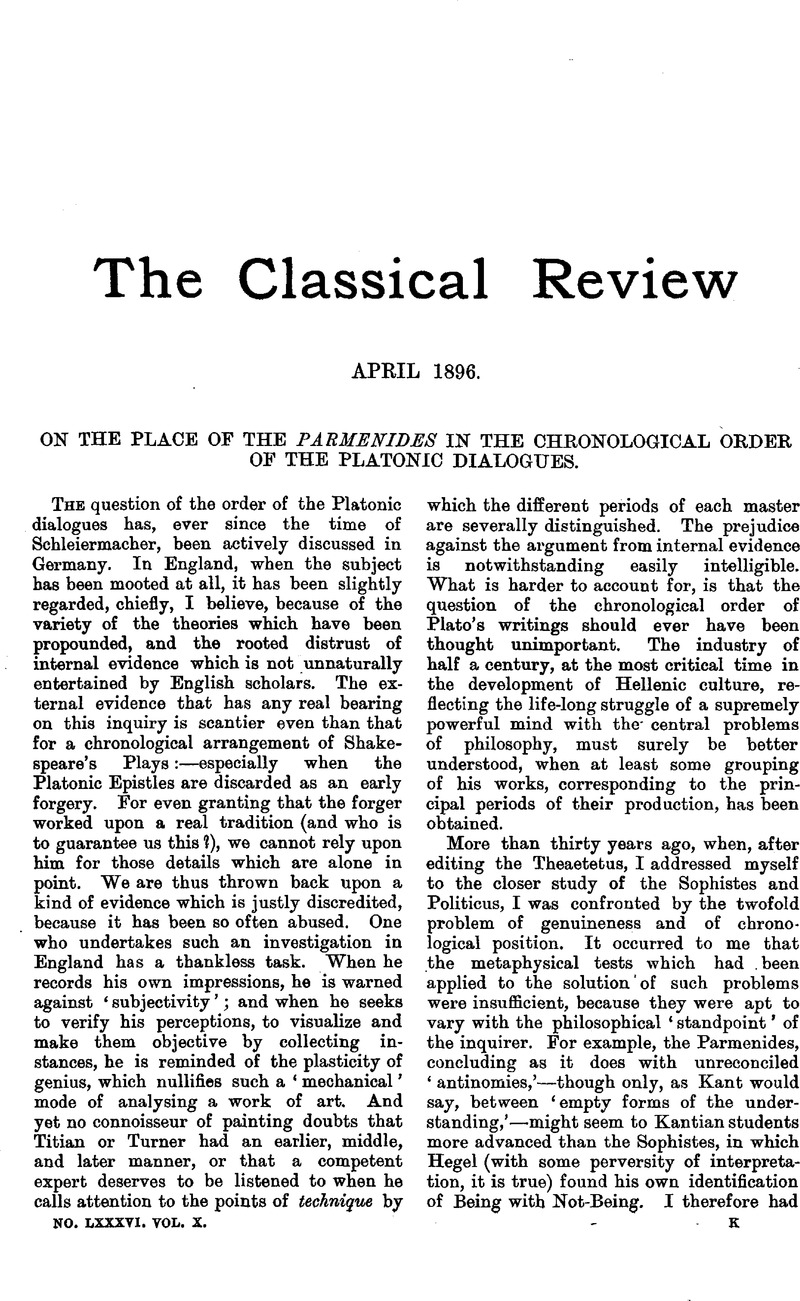Article contents
On the Place of the Parmenides in the Chronological Order of the Platonic Dialogues
Published online by Cambridge University Press: 27 October 2009
Abstract

- Type
- Review Article
- Information
- Copyright
- Copyright © The Classical Association 1896
References
page 130 note 1 Except γνεσις and κνησισ.
page 130 note 2 Excepting πιστμη, νημα, δξα, φνταμα.
page 130 note 3 For the convenience of the reader, I copy here without the numbers the order in which the dialogues come out, when tried by this single test, viz. the proportion of words common and peculiar to them with the group consisting of Tim. Critia, Legg.
1. Polit. 2. Soph. Polit. (in one). 3. Phaedr. 4. Soph. 5. Rep. 6. Menex. 7. Phaedo. 8. Symp. 9. Philebus. 10. Ion. 11. Theaetetus. ![]() .
.
15. Crito (misprinted ‘Critias’ in the edition of Soph. Polit.). 16. Hippias Minor. 17. Meno. 18. I. Alcibiades. 19. Charmides.
The one thing proved so far is the close affinity of Soph. Polit. to the latest group. These dialogues are shown by these and other signs to divide the Republic from the Laws. The Phaedrus from its exuberance takes a higher place than of right belongs to it. The same is true in a less degree of the Symposium. On the other hand the Philebus and Parmenides, and to a less extent the Theaetetus and Sophistes stand lower in this list than they would if tried by other considerations. Both friendly and unfriendly critics have unfairly treated this quarter of a page as if it represented the whole of my argument, which extends over twenty-seven pages.
page 130 note 4 I may call special attention to the use of τκν∘ν for παιδ∘ν and of γυμναστς for παιδ∘τρβης.
page 135 note 1 Soph. 259 D.
- 1
- Cited by




